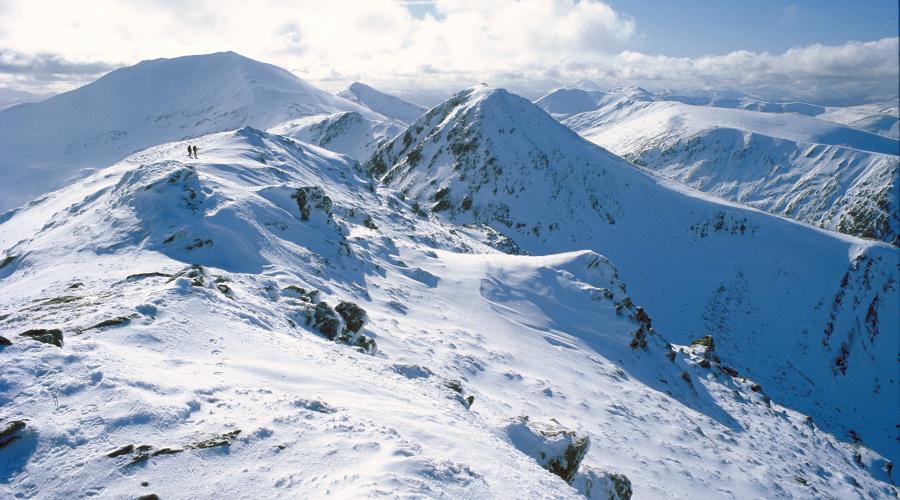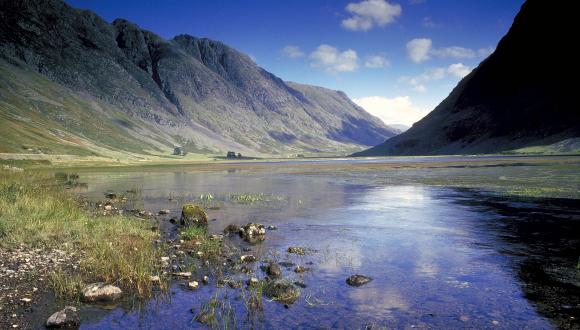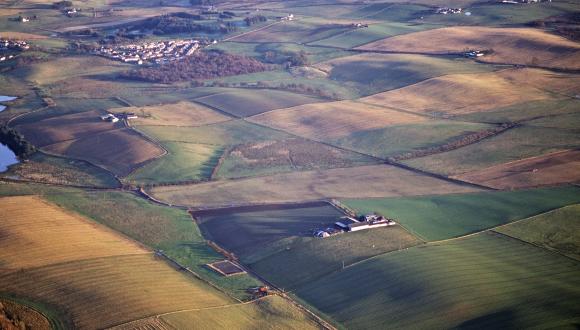
The Ice Age
The current Ice Age began 2.6 million years ago and continues today, although we’re now in a warmer, interglacial phase.
Scotland’s climate had been gradually cooling for almost 50 million years beforehand, with the cooling intensifying about 3 million years ago. This culminated in the onset of the Ice Age, which marks the start of the present geological period, the Quaternary.
Extremes of hot and cold
Our Ice Age climate has swung regularly back and forth between warm and cold conditions.
During colder episodes (glacials), glaciers existed in Scotland. In warmer periods (interglacials), the climate was more like it is today – and may even have been warmer.
Glacier coverage
Ice sheets covered all of Scotland except the very highest peaks during the more intense glacials. These may have occurred five or six times in the last 750,000 years.
Even in the many less intensely cold episodes, smaller mountain glaciers existed in the corries and glens of the Highlands.
What we see today
Each successive glaciation not only helped to shape Scotland’s landscape, but also removed most of the deposits of earlier glaciations. As such, much of the evidence we see today dates from the time of the last major glacial period.
This last glacial period, known in Britain as the Late Devensian glaciation, began about 33,000 years ago. At its peak, about 22,000 years ago, a large ice sheet covered all of Scotland and went as far south as England’s Midlands area.
Loch Lomond Readvance
About 15,000 years ago, the climate warmed rapidly.
Dramatic landscape changes occurred as:
- the glaciers melted
- moraines were deposited
- vast volumes of meltwater poured across the landscape
- unstable slopes collapsed
The climate warming was short-lived, however, and intensely cold conditions returned briefly about 12,900 years ago, with the Loch Lomond Readvance.
This readvance of the glaciers saw an ice cap develop in western Scotland, stretching from Torridon to Loch Lomond, and small corrie glaciers form in the high mountains. It’s known as the Loch Lomond Readvance as evidence for its occurrence was first found near Loch Lomond.
Finally, about 11,500 years ago, rapid climate warming caused the last glaciers to melt, initiating the present Holocene interglacial phase.






